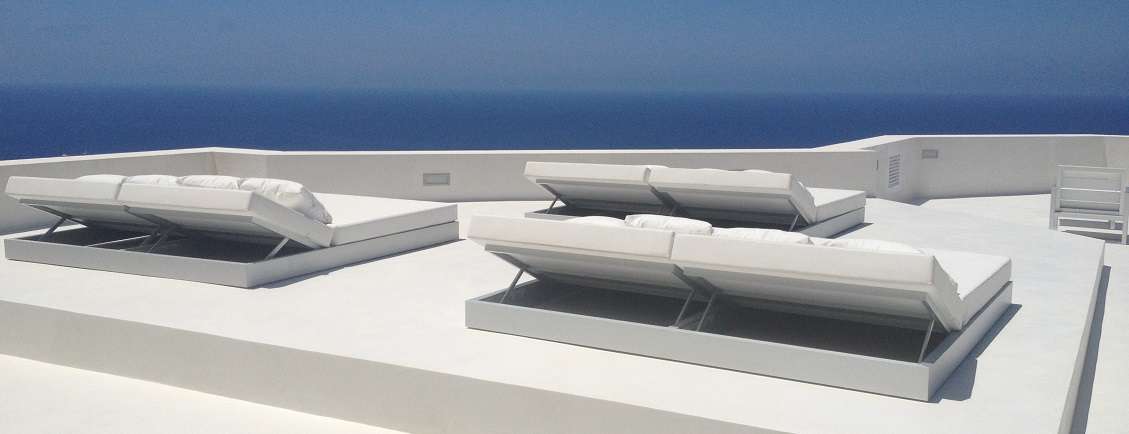Concrete for terraces, outdoor flooring, garden paths, pool surrounds
Micro concrete for outdoor floors
Marius Aurenti’s Micro concrete terrace is a millimetre-thick Micro concrete, just 2 mm thick, which can be used to create large, unified outdoor surfaces of any flatness.
It can be made slip-resistant and complies with PN 24 and PC 20 standards to ensure the safety and recreational use of your outdoors. .
Features
- We recommend shades A, B, C or D for temperate zones and A, B, C for tropical zones.
- High mechanical strength
- Excellent adhesion
- Waterproof
- UV-resistant
- Permissible surface: Rough concrete slab
Destination
- Terraces
- Pool decks
- Driveways and paths suitable for light vehicles
- General outdoor flooring
Substrate
For outdoor use, the quality of the substrate must be perfectly prepared, as it is exposed to the elements, i.e. sun, wind, etc. Marius Aurenti concrete terraces can only be laid on rough concrete slabs, which are made in accordance with DTU 13.3 . This does not apply to tiles that are too thin or to old tiles.
Find out more in the technical data sheets.
Order your samples and colour charts on the
Matériauthèque
.
Maintenance
A Micro concrete terrace can be cleaned with a hose or karcher, either a special type or with low water pressure.
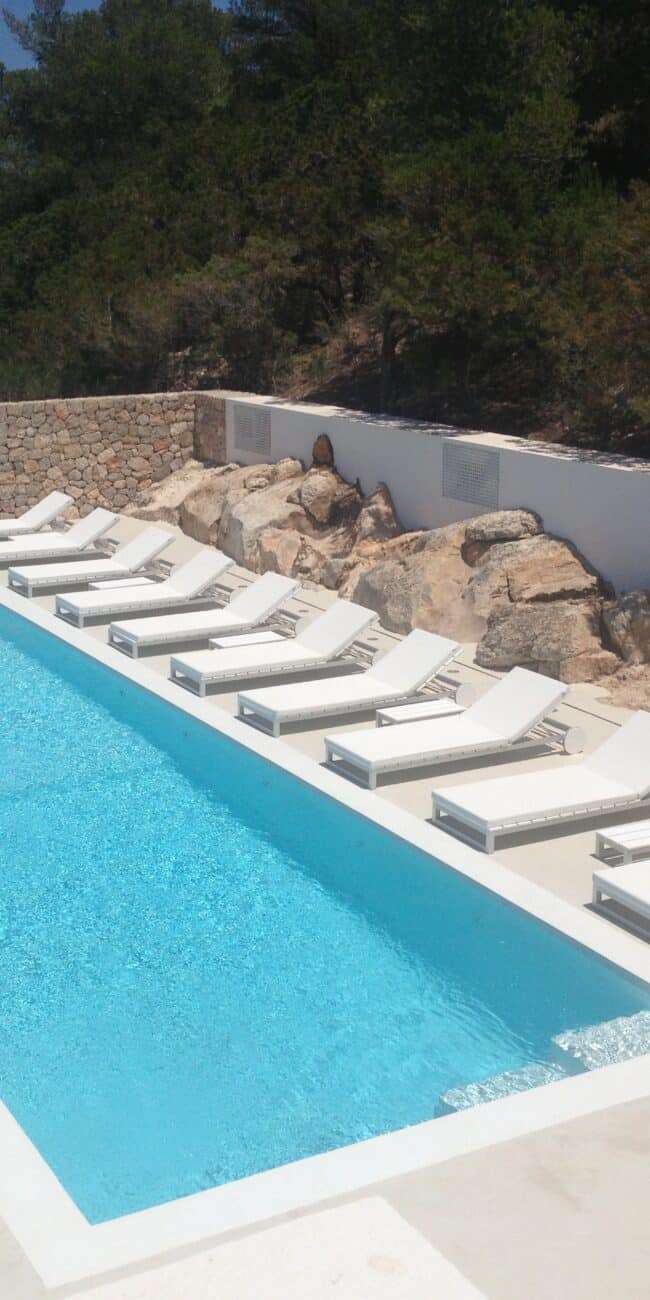
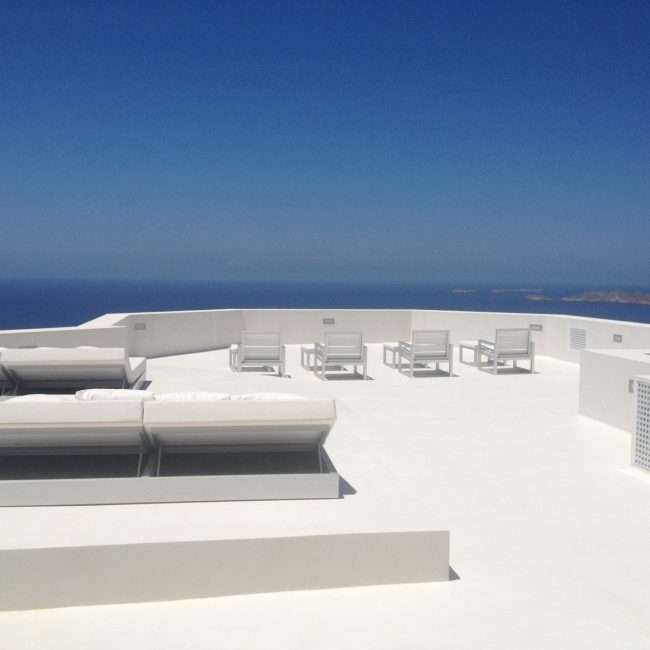
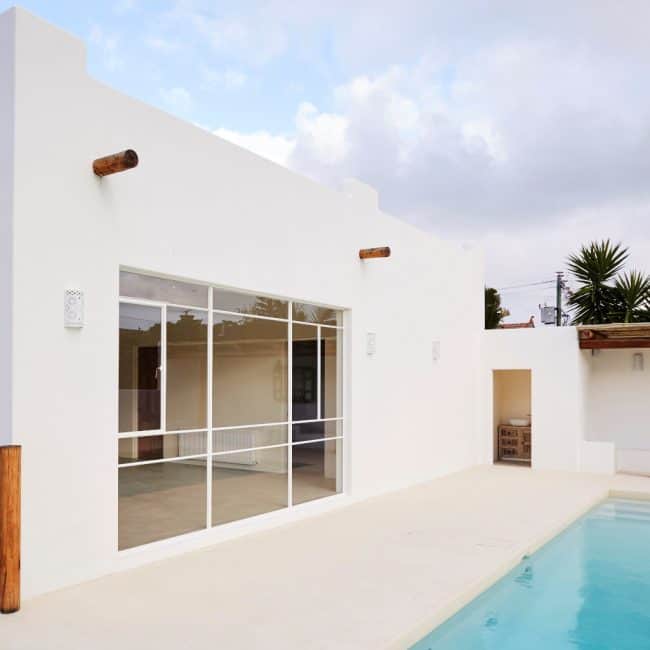
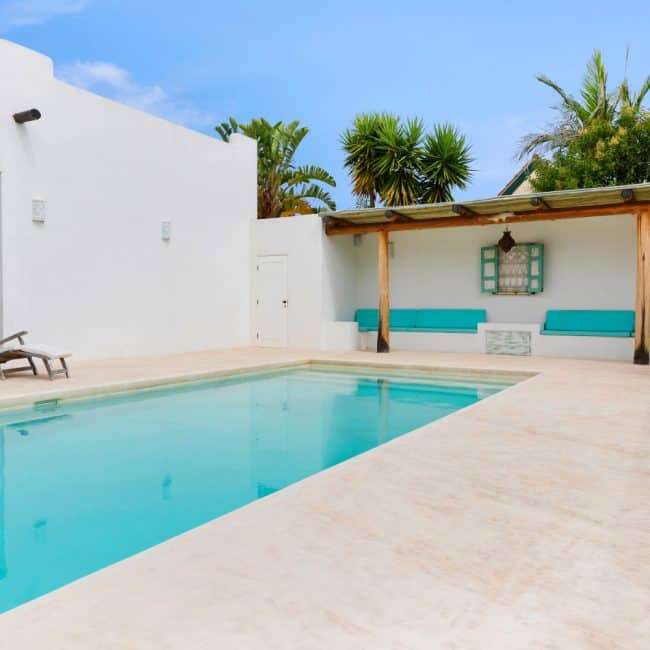
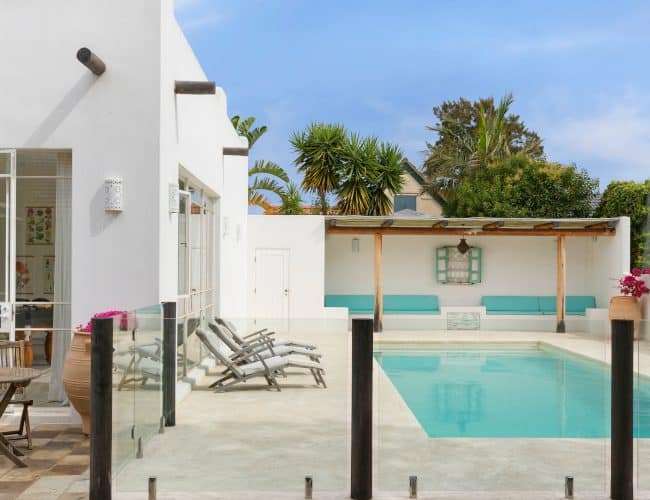
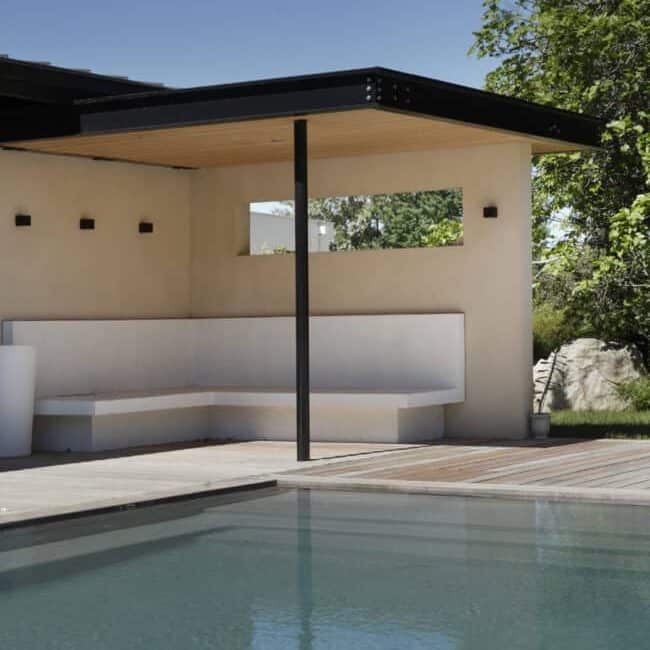
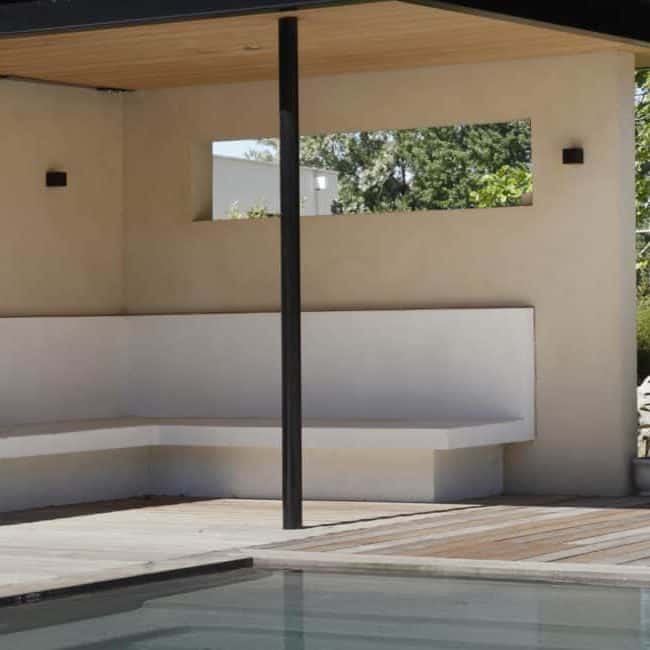
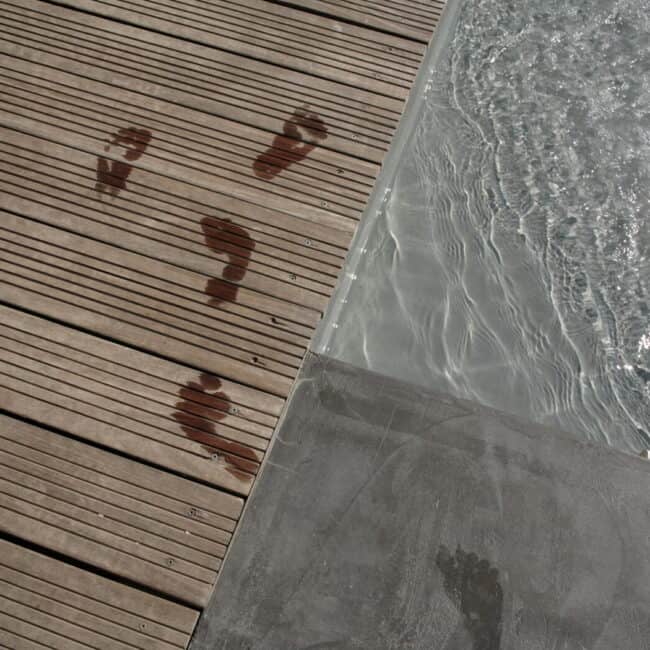
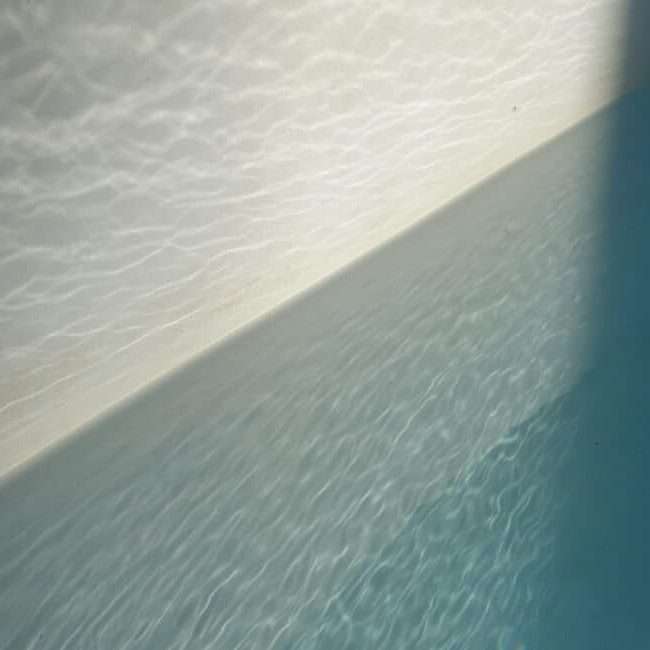
Micro concrete – 71 colors – Marius Aurenti
Technical data sheets (PDF version)
Technical data sheets (web version)
Presentation
High-performance, millimetric hydraulic mortar for Micro concrete coatings to decorate outdoor floors (terraces, pool decks, driveways, light-vehicle paths). Its grained texture gives the floor an anti-slip function.
This Micro concrete is an innovation made in France.
It offers excellent chemical, mechanical, adhesion and waterproofing resistance.
Available in 71 colors (Blush Concentré Couleur Minérale).
This product forms the base layer of the Marius Aurenti micro concrete system (see System Data Sheet, next page).
Packaging
Kit of 3 components:
- White-based Micro Concrete Terrace component A / 18.8 kg
- Liquid Micro Concrete Classic component B / 5.32 kg
- Blush Concentrated / 1.2 kg
The 7 key benefits of Marius Aurenti Micro concrete
- Without special seal
- 15-year crack-free warranty
- A range of high-resistance varnishes from matt to gloss
- Non-slip texture
- 71 mineral colors
- 2 mm thick
- 44MPa
System plug
Features
Marius Aurenti’s Micro concrete Terrasse + Blush Concentrated system includes :
- a mass layer
- a finishing coat
Refer to their respective Technical Data Sheets and Safety Data Sheets.
Properties
| SUPPORT | TRADE NAME | NUMBER OF COATS | TOTAL CONSUMPTION | |
| MASS LAYER | / | Millimetric Marius Aurenti Terrace Decorative Mortar | 2 coats | 4 kg/sq.m. |
| PROTECTIVE LAYER | Impregnation Terrace n°2 | 2 coats | 200 to 300 g/m |
System Micro Concrete Terrace + Blush Concentrated is available in 71 colors from the Marius Aurenti IRIS Color Chart.
Permissible substrates
The diversity of substrates and their conditions calls for specific preparation and primers.
Substrates must be sound, flat, dry, rigid and cohesive, stable and clean (especially free of grease, oil or laitance).
They must be carried out in accordance with current DTU standards. It is important that the substrate be cohesive and free of cracks.
Active cracks and expansion joints will be left open and will not be covered. They will be treated with MS Polymer Color Marius Aurenti after the Classic micro concrete has been applied.
Concrete and screed substrates must be at least 28 days old. They must be level, cohesive, clean and have a moisture content of <4% or 0.5% for calcium sulfate-based fluid screeds.
A) New paving slabs, concrete floors over crawl spaces and poured concrete floors over steel troughs
Concrete slabs and concrete floors over crawl spaces must be laid in compliance with standard NF P 11-213 (DTU 13.3); they must be reinforced in compliance with the same DTU.
B) Pool and pond supports
For swimming pools and ponds, please refer to the Marius Aurenti swimming pool guide for specific substrate preparation and application methods.
Precautions
Colors and blends
To guarantee shade homogeneity, use the same component A batch number and the same Blush Concentré Couleur Minérale batch number for the same job.
Mineral Color Concentrate Blushes contain pigments, fillers and additives in different proportions to achieve a constant rheology (fluidity and consistency) of the final product. It is strictly forbidden to mix concentrates together.
Béton Ciré Terrasse bases are semi-finished materials. A concentrate must be added to ensure that the properties of Terrace micro Concrete are integral and the formula stable. Even in white, the addition of a white Mineral Color Concentrate Blush is mandatory. Using the base alone without adding the concentrate alters the nature of the product and reduces the system’s chemical and mechanical performance.
The product must be used by strictly mixing the 3 components.
Never add water.
Uses
Do not apply to solid wood, softwood floors, plastics and textiles, terracotta and terracotta tiles.
Storage and safety
1 year in unopened original packaging, out of direct sunlight and frost, at a temperature between +5° and 25°C, ideally between 15 and 20°C. Check the expiration date on the packaging before use. Once opened, the product must be used within 7 days.
Use appropriate personal safety equipment as described in Safety Data Sheets.
For further safety information, please consult the Safety Data Sheet.
Mixture preparation
Preparation is carried out using dry mixing (for multiple use of the kit) or wet mixing (for complete use of the kit).
Dry mixing
In the case of dry mixing, always mix base and concentrate in their entirety before dividing.
- Roll the base bucket to aerate and soften the material
- Open the base bucket and make a slight indentation in the center of the base.
- Shake and open the jar of concentrate
- Pour concentrate into center of base bucket
- Block the bucket with the feet and mix the base and concentrate (ideally with a mixer for pasty products; please consult us for prices).
- Immerse the mixer and gradually increase the speed.
- Continue mixing with straight and angled vertical and lateral movements to perfectly blend the contents. Insist on the edges at the bottom of the jar, so as not to forget those corners that are most difficult to mix. When mixing for the first time, we recommend pouring the mixed contents into a bucket of the same size, to visually check the quality of the mix and repeat if necessary. Mixing time must not be less than 1 minute
- Add component B (liquid) to the quantity of powder prepared: base (component A) + Blush Concentré Couleur Minérale perfectly mixed according to the table below:
COMPONENT B (liquid) in kg | COMPONENT A + BLUSH concentrate Mineral color (colored powder) in kg | Ready-to-apply product in kg |
| 0,21 | 0,79 | 1,00 |
| 0,42 | 1,58 | 2,00 |
| 0,63 | 2,37 | 3,00 |
| 1,26 | 4,74 | 6,00 |
| 2,66 | 10,00 | 12,66 |
| 5,32 | 20,00 | 25,32 |
Note: the shelf life of dry-mixed materials is not affected by mixing if the buckets (base + concentrate) are closed and stored under normal conditions.
Wet mix
- Pour the liquid part (component B, 5.32kg) into a clean, empty bucket
- Shake and open the jar of Concentré
- Pour the Concentrate into the liquid
- Block the bucket and mix at progressive speed until the liquid and concentrate are homogeneous.
Never add water
Implementation
Hydrometry
The Marius Aurenti Micro Concrete System should be applied at a relative ambient humidity of between 30% and 80%, except for varnishes which require a humidity range above 40% and below 80%, ideally between 50% and 65%.
Moisture conditions must be maintained for at least 48 hours after application of the last coat.
Protect from wind, direct sunlight, rain, frost and environmental influences during application and curing.
Before any application, check the moisture content of the substrate (maximum 4% moisture content and ≤0.5% for calcium sulfate-based fluid screeds).
Temperature
Before starting any application, it is essential to check the substrate and ambient temperatures. Substrate temperature must be between +5°C and +25°C (ideal temperature: > 15°C and 20°C).
It must be at least 3°C higher than the temperature corresponding to the dew point.
The Marius Aurenti micro concrete System can be applied at ambient temperatures between 5°C and 25°C for the micro concrete and between 15°C and 25°C for the varnishes, at least 24 hours before the first application and at least 24 hours after application of the last coat.
Low and high temperatures will respectively slow down and speed up setting. Do not apply in frosty or hot weather. Provide heating or cooling systems if necessary.
Application material
Smoothing trowel, 6 mm notched comb, triangular notch, (first coat only).
Parfait’Liss 35 cm or 200 mm stainless steel or plastic smoother.
Sponge float or mason’s sponge (dry) for a non-slip finish.
Clean tools with water.
The slope
Obviously, since we’re subject to severe climatic conditions, we recommend careful work on the subgrade, the mesh, the joints and the quality of the concrete, to avoid cracks in the substrate that can’t be repaired.
A minimum slope of 2% towards the outside is recommended to drain off rainwater.
The use of additives such as plasticizers, fibers and curing agents is essential to ensure a high quality surface for micro concrete.
A smoothed finish during casting will match the future millimetric micro concrete on top.
Installation
Béton Ciré Marius Aurenti is a two-component mortar applied 2 mm thick.
It is important to mechanically sand the slab and check for flash.
Apply a first coat of Béton Ciré at a consumption of approx. 3 kg/m² (approx. 1.5 mm thick) using a float or smoothing tool.
To regulate thickness, the first coat can be applied with a 6 mm notched comb, then immediately smoothed with a smoothing trowel until the ridges on the notched comb disappear completely.
In this case, smoothing must be carried out without delay, in the fresh micro concrete. This first layer determines the final thickness and aesthetic effects.
Before applying the second coat and 24 hours after applying the first coat (at 20°C, 60% relative humidity), the surface can be sanded to remove decorative effects or excessive irregularities (40 grit) using a single-brush machine (or orbital sander), followed by thorough mechanical dusting.
Apply the second coat at a rate of approx. 1 kg/m², using a stainless steel trowel or smoothing machine. This second layer determines the final grain of the coating and its aesthetic appearance. It’s important to note that a stainless steel application tool can leave dark marks (especially on light colors). A plastic tool may be preferred.
The second coat is finished with a more or less rough finish to reinforce the anti-slip properties of this mortar, particularly on frequently damp surfaces. In fact, a rubbed or grained finish using a dry sponge is ideal for barefoot traffic areas, to avoid the risk of slipping and falling.
If anti-slip properties are not required, after 24 hours drying time (at 20°C), sand the surface (grit 80 then 120) using an orbital sander (or a single-brush sander for floors), then remove dust with a vacuum cleaner. Corners should be sanded by hand. The intensity of the sanding will finalize the surface appearance (grained or smooth) and bring out the material effects.
If the surface is deemed satisfactory and compliant, proceed with the application of the finish. 2 days (20°C, 60%RH) after mortar application, without prior sanding, apply 2 finishing coats of Marius Aurenti Impregnation Terrasse n°2. This finish gives a satin appearance and slightly darkens shades (wet look).
Exterior finish :
- Impregnation Terrace n°2
Consumption
| Destination | Detailed description | Consumption of micro concrete / m2 | Thickness | Surface area for 1 Kit + Blush |
| Exterior flooring | Smooth exterior paving | 4 kg/m² for 2 coats | approx 2 mm | 6.5m² approx |
Drying time at 20°C and 60% relative humidity
| Open time | 25 to 30 minutes |
| Touch-dry | 4 hours |
| Between coats | 24 hours minimum |
| Completely dry | 2 days, but mechanical strength reached after 28 days |
The surface must not be exposed to the full range of stresses until the treatment system has fully dried, i.e. 7 days at 20°C and 60% relative humidity.
Between 2 days and 7 days, light traffic may be allowed, with the following precautions: microbreathable protective tarpaulins such as Landolt’s Floorliner Vapor, traffic in socks or overshoes.
No exposure to water or chemical agents, no rubbing or scratching of furniture. It is forbidden to apply adhesives to coverings.
Do not lay carpet for 7 days.
VERY IMPORTANT NOTE:
The maximum hardness of the Marius Aurenti Micro Concrete System is achieved after 28 days of drying.
The floor must be handed over immediately after completion of the work. The freshly installed Marius Aurenti System must be protected from the work of other trades by protective materials that allow ventilation (see Terrace Impregnation Technical Data Sheet no. 2).
Time before first wet maintenance: 3 days minimum after laying Impregnation Terrasse n°2.
Certificate
Based on CSTB (Centre Scientifique Technique du Bâtiment) test reports, LNE (Laboratoire National de Métrologie et d’essais) test reports and Marius Aurenti laboratory test reports.
CSTB n° RA12-0208
CSTB n° RA20-0353
CSTB n° R2EM-11-26022578
CSTB n° R2EM-SIST-14-26047471
CSTB n° ES541200113
CSTB n° DSR-SIST-22-26085256
LNE n° CX 1600936
Matières Marius Aurenti declares that the Marius Aurenti Systems: Béton Ciré Classic and Béton Ciré Fluide with Marius Aurenti varnish finishes meet the following performance levels (pages 13-14-15), in accordance with the application recommendations.
| Flexural strength (NF EN 13892-2) | 16.8 N/mm² bending strength |
| Compressive strength (NF EN 13892-2) | 44.1 N/mm² compressive strength |
| Punching resistance (NF EN 13892-6) | 293.5 N/mm² resistance |
| Surface hardness (NF EN 13892-6:2003) | 119.1 N/mm² hardness |
| Wear resistance BCA (NF 13892-8:2003) | 0.08 mm |
| Impact resistance 1kg-200 cm (NF EN ISO 6272) | No cracking |
| Bond strength (NF EN 13892-8:2003) | 2.5 N/mm² Cohesive failure |
| Fire resistance (NF EN ISO 9239-1, NF EN ISO 13501-1 and NF EN ISO 11925-2) | Bf1-S1 (IF3, Visco n°7 and HR1) |
| Slip resistance (maximum values achieved depending on application) (XP P05-010 and XP P05-011) | PN 24 PC 20 |
| Water permeability (NF EN 1062-3:2003) | 0.08 kg/m².h0.5 |
CE mark of conformity, defined by Directive 93/68/EEC :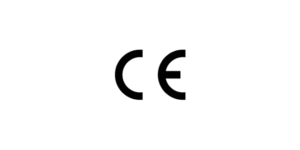
System plug
Composition
Mixture of additives and mineral pigments.
Properties
- Mineral coloring, resistant to UV, weathering, alkalis and cement
- Drastic reduction in the rocket phenomenon
- Optimized rheology
- Optimum color accuracy and consistency
- Non-toxic product
- Aesthetic qualities
On the basis of customer samples, our Research Laboratory develops customized shades.
Packaging
1.2 kg
Implementation
Precautions, prohibitions and warranty
To guarantee shade homogeneity, use the same Mineral Color Blush Concentrate batch number for the same job.
Never split a Mineral Color Blush Concentrate.
Never add water.
Each Blush Mineral Color Concentrate is colorimetrically tested. That said, due to the mineral and hydraulic composition of the materials, color variation is possible from batch to batch.
In fact, to produce a reference color (sample), it must be made using the same materials, the same batches of materials, on identical substrates, under the same weather conditions, with the same tools and with the same gestures.
Consequently, we cannot be held liable for any discrepancies.
For this reason, we always recommend carrying out a trial run before starting work.
Preparing Classic, Fluid, Ultra Fine, Terrace Micro Concrete
Dry mixing (for multiple use of the kit) or wet mixing (for complete use of the kit).
Dry mixing – Recommended for small application areas
| Mixing proportions | Weight of component A (Powder) | Mineral Color Blush Concentrate |
| Classic / Fluid / Terrace / Ultra Fine micro Concrete | 18.8 kg | 1 unit of 1.2 kg |
Always mix component A and the concentrate in their entirety before dividing.
- Roll the bucket of Component A to aerate and soften the material
- Open the Component A bucket and make a slight indentation in the center of the base.
- Shake and open the jar of Blush Mineral Color Concentrate.
- Pour the Concentrate into the center of the base bucket
- Block the bucket with your feet, and mix, at low speed (a mixer for pasty products is recommended, please consult us for prices), so be gentle.
- Immerse the mixer and gradually increase the speed.
- Continue mixing with straight and angled vertical and lateral movements to perfectly blend the contents. Insist on the edges at the bottom of the jar, so as not to forget those corners that are most difficult to mix. When mixing for the first time, we recommend pouring the mixed contents into a bucket of the same size, to visually check the quality of the mix and repeat if necessary. Mixing time should not be less than 1 minute. The color in the bucket should be even at the end of mixing.
- Homogenize component B well, then introduce the mixture (component A + concentrate).
- Mix with a mechanical mixer until homogeneous and lump-free.
- Transfer the coloured powder into a perfectly clean, dry bucket.
- Stir the powder until a homogeneous color is obtained.
- Add component B (liquid) to the quantity of powder prepared.
Wet mixing – Recommended for large areas of application
- Pour Component B (liquid) into a clean, dry bucket.
- Shake and open the jar of colored concentrate.
- Add the jar of Color Concentrate, block the bucket and mix mechanically at low speed until a homogeneous mixture is obtained, in the proportions shown in the following table:
| Mixing proportions | Weight of component A (Powder) | Mineral Color Blush Concentrate |
| Classic / Fluid / Terrace / Ultra Fine micro Concrete | 5.32 kg | 1 unit of 1.2 kg |
- Add the powder (component A) to the liquid.
- Mix mechanically for 2-3 minutes until homogeneous. Never add water.
Failure to do so may result in a change in shade.
How to APPLY micro concrete outdoors?
Applying micro concrete outdoors involves :
1/ Producing a concrete slab in accordance with the rules of the trade (DTU 13.3)
2/ Apply the concrete terrace in 2 coats, then treat it with the terrace impregnation to protect it.
I. Creating a high-quality concrete slab
I.1. Earthworks
Before pouring a concrete slab, you first have to do some earthwork:
- disburse
- flatten
- lay a hedgehog, i.e. a thick, compact, packed bed of pebbles, a draining, resistant layer on which to spread the concrete, as if the slab were floating on it; the type and thickness of the pebbles is very important!
The craftsman will make sure that the slope is 2%, so that rainwater runs off towards the outside, and never towards the building.
I.2. Preparations: capillary rise and frost protection wick
The quality of the preparation must avoid any capillary rise (water rises spontaneously in a porous material if it is in direct contact with damp earth).
In regions where there is frost, a frost-proof spade will be plunged into the soil.
I.3. Dividing and expansion joints
A uniform concrete slab on a floor which, by its very nature, is not always uniform, inevitably entails a risk of cracking.
To avoid these risks, the craftsman must install expansion and separation joints.
A joint should measure one-third the thickness of the slab. The aim is to create a point of weakness, so that in the event of a ground movement, it will clearly break at that point.
This expansion joint is standardized in DTU 13-3.
Joints are laid wherever there are corners or objects: a socket, a post, etc. These joints serve to separate the slab from these objects, preventing them from applying mechanical stresses that could damage it.
There are joint backings that are supported by polystyrene.
In contact with a garden or any earth surface, the edge of the concrete slab risks absorbing water by capillary action, thus swelling and fracturing, even more so due to freeze/thaw cycles; the uneven presence of moisture would also lead to slight color changes. As a result, we’re going to have to do some excavation work to treat the outside parts with waterproofing finishes and, here too, install expansion joints.
I.4. Laying the concrete slab
To make a quality concrete slab, it’s best to order your concrete from a concrete batching plant; while it will cost a little more, it will already be homogeneously mixed and pumped into place.
Advantages: saves time, improves mechanical stress, homogeneity, density and fluidity of concrete.
Working alone with a concrete mixer, by hand, exposes you to errors in dosage and temperature, which will result in a poorer-quality slab when it dries. To lay millimetric micro concrete, the quality of the slab is essential.
What’s more, the concrete ordered from the plant is admixed with fibers to minimize shrinkage during drying, as if a large spider’s web ensured the solidity of the whole and its resistance to mechanical stress.
In additives, superplasticizers such as sicalatex give it greater expansion capacities and enable it to cope better with drying.
It’s advisable to spray a curing compound over the slab, which will protect it during the drying process, whatever the weather conditions and their changes, just as a film would over food.
The curing compound is then lightly sanded clean, before the micro concrete coating is applied.
II. Laying the concrete terrace
II.1. 2mm thick coating
Once the concrete slab has dried, it can be started by qualified contractors.
When it comes to quantities to be used, there’s no question of skimping: the minimum thickness of micro concrete coating is really at least 2mm; outdoors, it’s out of the question to use less, otherwise the result won’t be as long-lasting. You want to build a deck that will last for decades, not cut corners that will cost you a new job in 5 years!
For 100m², for example, we’d use 4 kilos of “micro concrete” coating per square metre, or 400 kilos.
Once again, the quality of the underlying concrete slab is paramount: there’s no question of trying to “recover” it by using plaster.
Coats of plaster are applied overnight, for a fresh-on-fresh effect that improves adhesion.
II.2. Surface treatment
The concrete surface will be treated in accordance with its intended use.
In fact, for every use of a surface there are standards for slipperiness; for pool edges there are standards such as PC-20 and PN 24. Otherwise you run the risk of slipping and injuring yourself…
This surface treatment involves graining the concrete to make it both smooth and rough.
On the same surface, it is possible to apply different treatments, to obtain surface textures adapted to different uses:
- a kitchen area that’s easier to clean
- a non-slip pool deck
- and the rest of the terrace in “normal” cladding
II.3. Choice of colors
To choose the right color for your micro concrete, you need to take into account the concept of luminance or visual luminance.
Luminous luminance is the ability of a color to reflect light, linked to its capacity to store heat.
It needs to be adapted to the climate and the orientation of the surface (south-facing, north-facing in the shade…), so that the colors are vibrant without overheating in summer. I


